via Blue Robotics
Okay, so you want to build a sweet underwater vehicle with your classmates or club friends, but you aren’t sure which competition to show it off to the world! What are your options? But first, why underwater robotics, aka marine robotics, or as we like to call it, Subsea STEM?
Marine robotics unifies all of the topics of STEM education – the sciences, the technological advances, the engineering behind the new technology, and mathematics used to analyze the data collected on each mission. Students have the opportunity to connect ideas across a variety of disciplines through experiential learning, all while building a vehicle, a team, and a dream to be the next underwater robotics competition world champion! 🙂
It’s important to note that the type of vehicle you are designing may only be eligible for certain competitions. Whether you are working on a remotely operated vehicle (ROV), an autonomous or unoccupied surface vessel (ASV or USV), an autonomous underwater vehicle (AUV), or perhaps even some sort of hybrid, you will be sure to find an event that is perfect to demonstrate your team’s and your bot’s new skills!
The following competitions are listed from entry-level to advanced and the difficulty level primarily depends on the missions of each event!

Mid competition vehicle fix!
SeaPerch
Vehicle Type: Remotely Operated Vehicle (ROV)
Experience Level: Middle School and High school
Location: Regional Competitions – Worldwide, International Competition – College Park, Maryland
Next Event: Stay tuned for 2021 dates!
Created in 2003, SeaPerch is an innovative underwater robotics program that equips teachers and students with the resources they need to build an underwater ROV in an in-school or out-of-school setting. Students build the ROV from a kit comprised of low-cost, easily accessible parts, following a curriculum that teaches basic engineering and science concepts with a marine engineering theme. The SeaPerch Program provides students with the opportunity to learn about STEM robotics while building an underwater ROV as part of a science and engineering technology curriculum. Throughout the project, students will learn engineering concepts, problem-solving, teamwork, and technical applications.
Fun fact: SeaPerch began as one project in a book entitled “How to Build an Underwater Robot,” by Harry Bohm and Vickie Jensen – the predecessor to one of our favorites, Underwater Robotics!
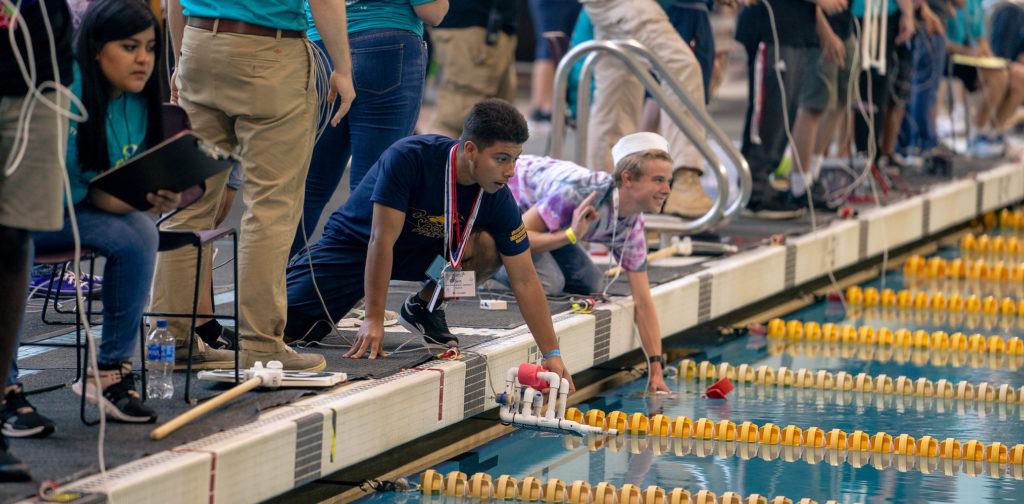
Ready, set, launch!
MATE ROV Competition
Vehicle Type: Remotely Operated Vehicle (ROV)
Experience Level: Elementary School, Middle School, High School, and University
Location: Regional Competitions – Worldwide, International Competition – United States
Next Event: Stay tuned for 2021 dates!
The MATE International ROV Competition challenges students to learn and creatively apply STEM skills to solve real-world problems and strengthen their critical thinking, collaboration, entrepreneurship, and innovation. Students are asked to think of themselves as entrepreneurs, forming a company to build and operate an ROV to fulfill the needs of the marine science and technology community. Not only must the ROV complete the assigned underwater tasks, but students must give an oral presentation to industry professionals, create written technical documentation about their ROV, and fashion a marketing display showcasing their vehicle.
Since 2001, the MATE ROV Competition has grown to nearly 800 teams worldwide, with over 6,000 students participating in events around the globe. The competition is divided into four levels: SCOUT, NAVIGATOR, RANGER, and EXPLORER. The progressive structure allows students to build upon previously mastered skills, with each level requiring increasingly more complex technology and tasks. Please note that only RANGER and EXPLORER class teams can advance to the MATE World Championship!
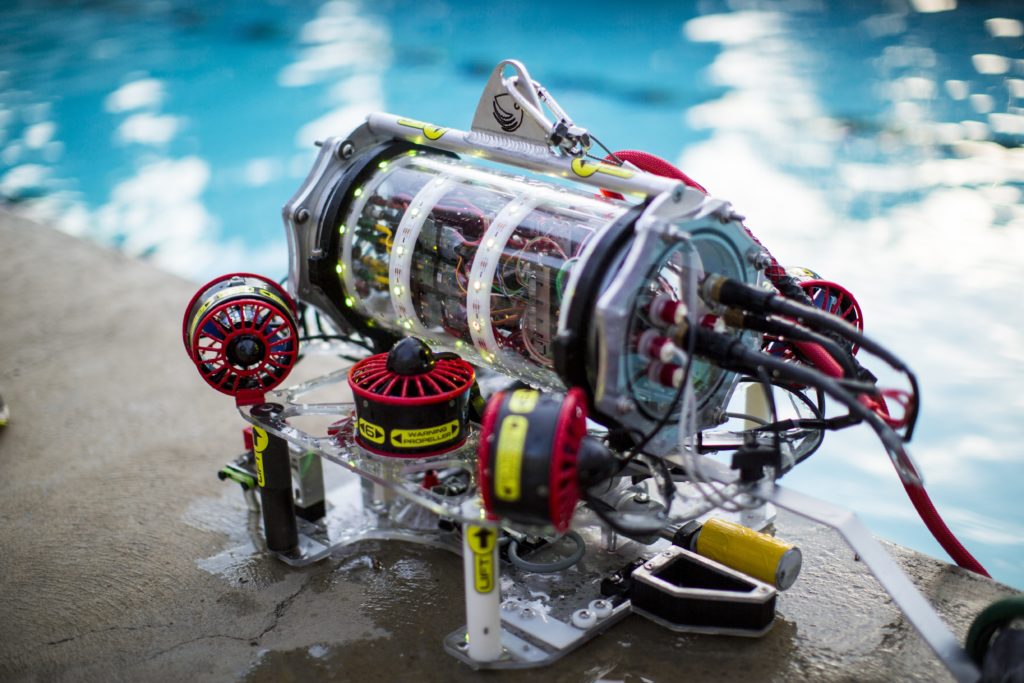
MATE ROV, designed by Jesuit Robotics.
SCOUT
The SCOUT class is the beginner level of MATE – it is most appropriate for high schools brand-new to robotics, middle schools, and elementary schools. SCOUT class ROVs are meant to be introductory projects that enable students to learn the fundamentals of ROV design and construction, get them excited about STEM, and motivate them to pursue additional knowledge and skills. The instructions, tutorials, and lesson plans are provided and basic ROV kits are available through MATE!
NAVIGATOR
Midway between SCOUT and RANGER classes is the NAVIGATOR class. It is most appropriate for high schools with some experience in robotics and with the MATE competition and middle schools with one or more years’ experience in the SCOUT class. Some understanding of robotic systems and electricity is helpful. If you have limited experience with land-based robotics competitions, or have robotics experience but no competition experience, NAVIGATOR is a great place to start.
RANGER
The RANGER class is the intermediate level. It is most appropriate for high schools, universities that are new to robotics, and middle schools with robotics experience. The robots and missions become more complex and technologically advanced. RANGER class teams should have a good understanding of robotic systems and electricity. Some knowledge of electronics, sensors, and waterproofing is helpful!
EXPLORER
Rounding out the classes of the MATE competition is the EXPLORER class – it’s the most advanced level and it is most appropriate for universities, community colleges, and high schools that have previously participated in the MATE competition. EXPLORER class teams must create a complex vehicle and have a deep understanding of electronics, sensors, subsea housings, and other technology. They must know all the things!
National Underwater Robotics Competition
Vehicle Type: Remotely Operated Vehicle (ROV)
Experience Level: Pre-High School, High School, University, and Adult
Location: ASU Polytechnic campus, Mesa, Arizona
Next Event: June 4-5, 2021
After a 6 year hiatus, The National Underwater Robotics Challenge returns as an underwater ROV competition that emphasizes real-world hands-on activities that motivate students to take on tough challenges in a fun and exciting way. Teams compete in one of four categories: Pre-High School, High School, University, and Adult. The goal of the various levels is to encourage vertical articulation, or collaboration and communication, between the levels to stimulate the teams to be the best they can be. Teams can choose from several levels of kits to build their ROV or build one on their own. The event is webcast live and takes place at night to simulate the dark depths of the ocean!

Night dives are the right dives!
RoboSub
Vehicle Type: Autonomous Underwater Vehicle (AUV)
Experience Level: High School, Undergraduate, and Graduate
Location: San Diego, California
Next Event: Stay tuned for 2021 dates
Launched in 1997, RoboSub (hosted by RoboNation) is an exciting underwater robotics competition in which teams of high school, college, and graduate students from around the world design and build an AUV. These vehicles are designed to autonomously navigate through a series of tasks that mimic ongoing research in Autonomous Underwater Systems. This event also serves to develop relationships between young engineers and the organizations developing and using unmanned and autonomous technologies.
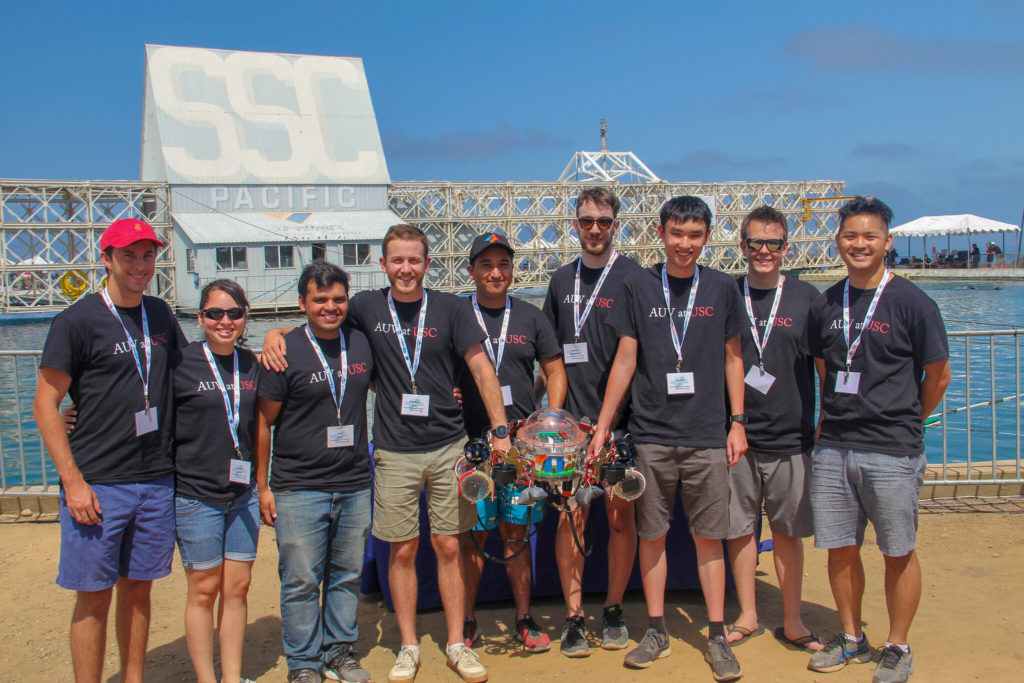
USC team members and their sub!
Singapore AUV Challenge
Vehicle Type: Autonomous Underwater Vehicle (AUV)
Experience Level: High School, Undergradute, and Graduate
Location: Singapore
Next Event: Stay tuned for 2021 dates!
SAUVC (in partnership with IEEE) is great learning ground for participants to experience the challenges of AUV system engineering and develop skills in the related fields of mechanical, electrical, and software engineering. The competition (which started in 2012) also features workshops and lectures from world-renowned experts in the field of marine robotics and autonomous underwater systems to inspire participants with new ideas and techniques to solve challenges and build an interest in careers related to marine robotics.
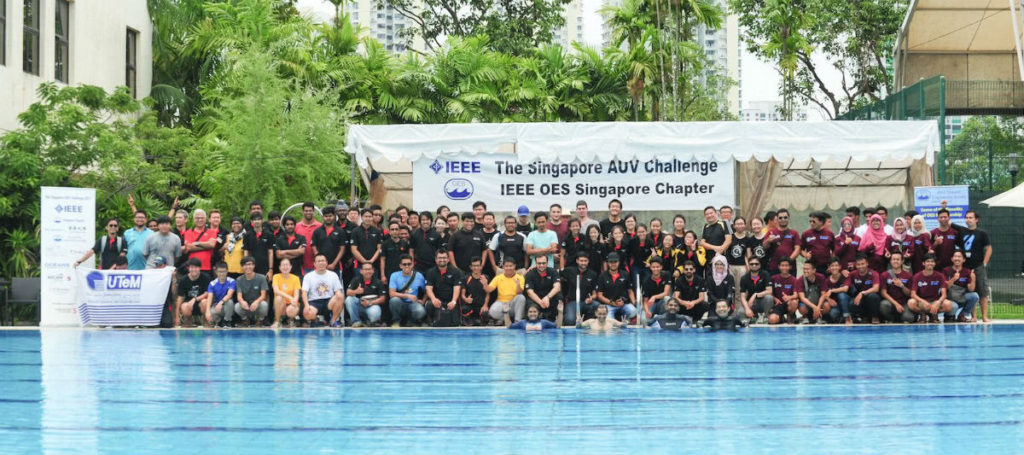
SAUVC competitors, 2017.
RoboBoat
Vehicle Type: Autonomous Surface Vehicle (ASV)
Experience Level: High School, Undergradute, and Graduate
Location: South Daytona, Florida
Next Event: Stay tuned for 2021 dates!
RoboBoat (also hosted by RoboNation) is an international robotics competition where teams from around the world design self-driving boats, or Autonomous or Unoccupied Surface Vessels (ASVs or USVs) to navigate through a challenge course. Aside from demonstrating some impressive maritime maneuverability, these student-built boats are designed to tackle tasks that mimic real-world challenges facing the maritime industry. These challenges include coastal surveillance, port security, and other types of oceanographic operations.
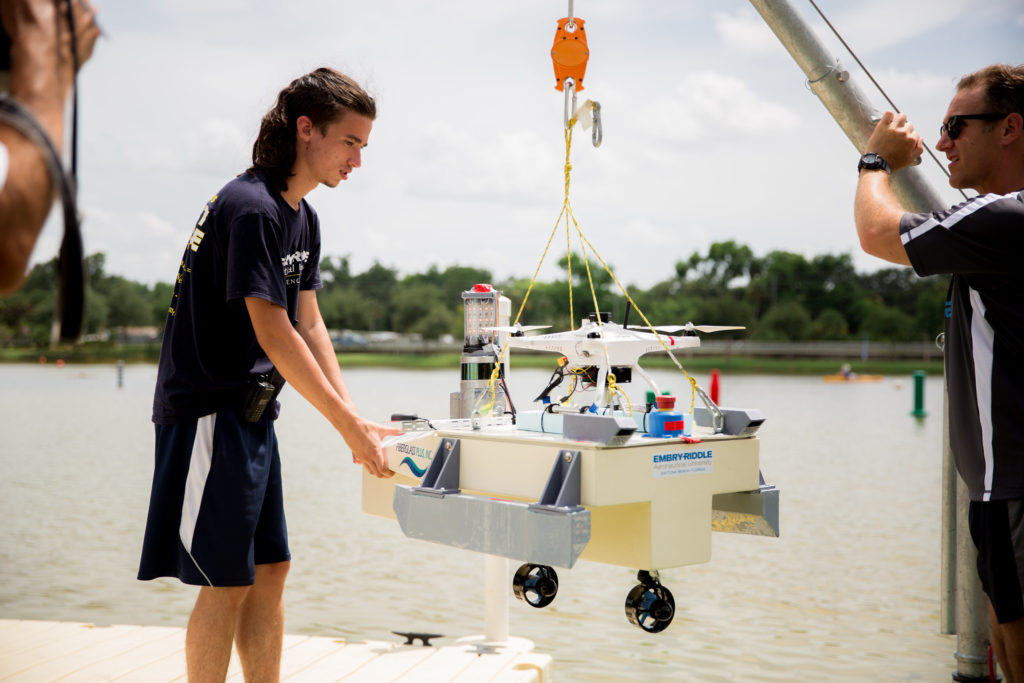
Embry-Riddle team members preparing for launch!
European Robotics League
Vehicle Type: Autonomous Underwater Vehicle (AUV)
Experience Level: University
Location: La Spezia, Italy
Next Event: Stay tuned for 2021 dates!
The European Robotics League local and major tournaments are based in Europe and are open to international participation. Teams compete in three vibrant fields of robotics (air, land, and sea) under the theme of smart urban environments. Competitors engage in annual local tournaments organized by a consortium of Europe’s most prestigious robotics institutes.
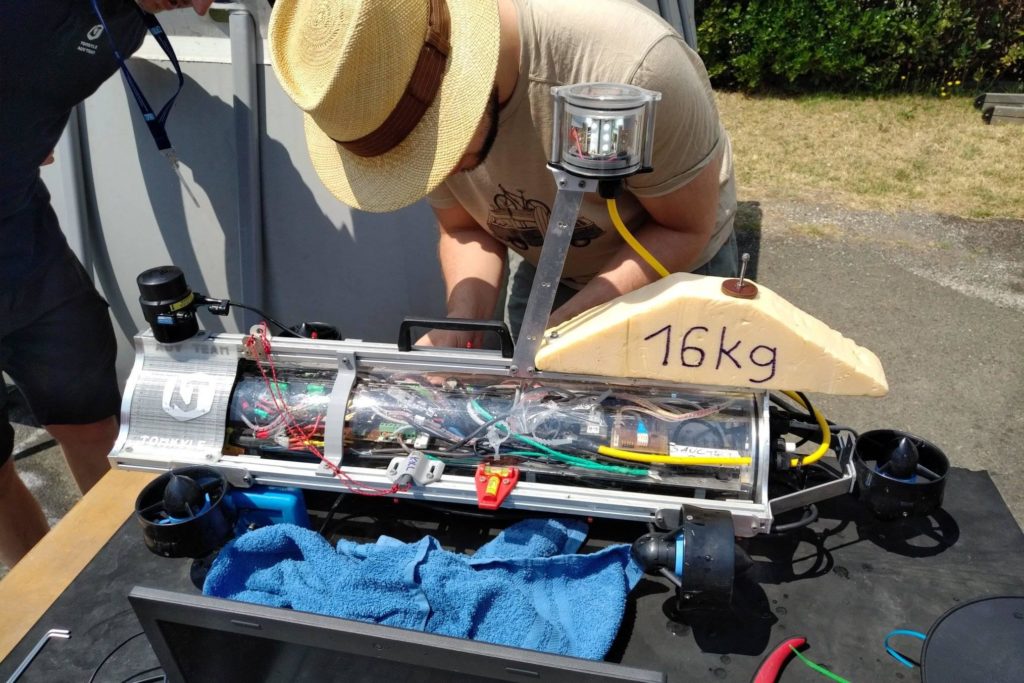
Successful safety check!
RobotX
Vehicle Type: Autonomous Maritime System (AMS)
Experience Level: Undergraduate, Graduate, PhD, and Post-Doc
Location: Worldwide (2020 in Honolulu, Hawaii)
Next Event: December 12-19, 2020
Established in 2014, the Maritime RobotX Challenge (also RoboNation!) is an international program that invites innovators to create autonomous vehicles across all domains (air, land, and water) to answer challenges found in the public and private sectors. All teams are required to use the autonomous maritime system as their primary competition vehicle.
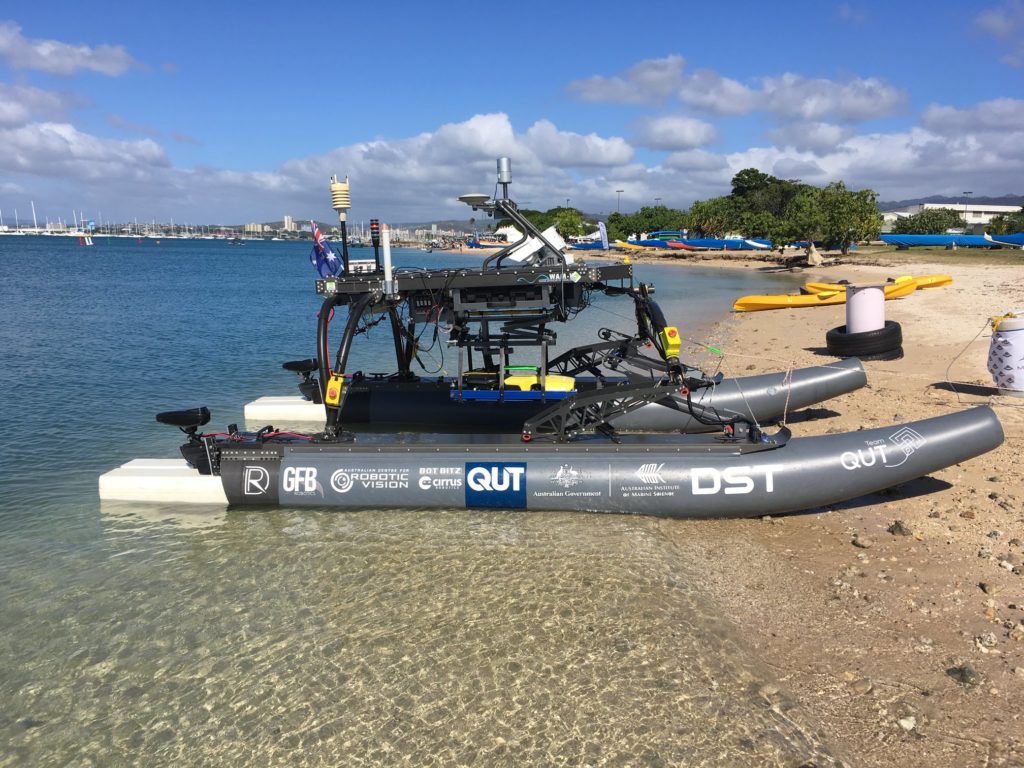
QUT vehicle at RobotX 2018.
Where will we see your vehicle? Send us your competition photos and be sure to keep an eye out for the next #SubseaSTEM Photo Contest!



